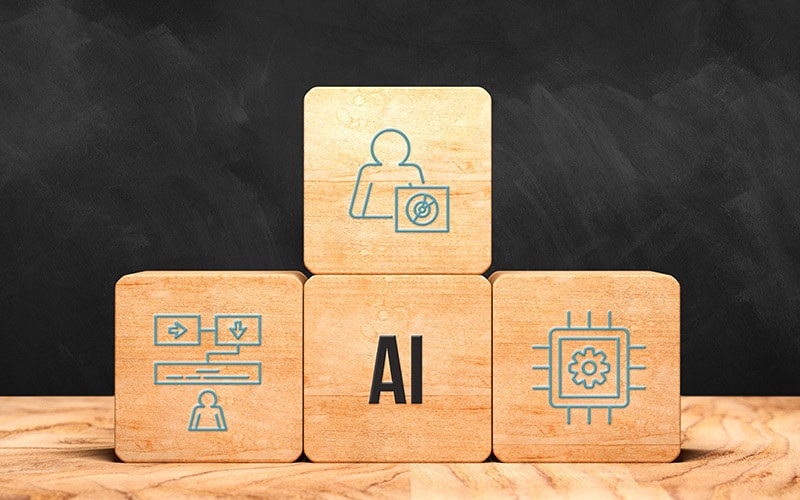Introduction
Cloud computing has reached a tipping point. Infosys analysis shows that just over half of incumbents are “cloud first,” and 60% have a transformation road map in place. These firms are embracing everything as a service and building new cloud platforms. And this adoption is driving a big market. By 2020, the cloud market will reach over $400 billion,1 and cloud spending will be six times greater than general IT purchases.2
However, some studies suggest that just 3% of organizations have optimized their cloud adoption to the extent that it supports revenue growth. The majority, while achieving strong cost reduction and operational improvements, are not getting the revenue uplift that a more scalable and agile cloud environment should achieve. Those that are in the lead have put the cloud at the center of their business strategy and operating model. Such digital natives achieve a total shareholder return 7% higher than those of large corporations.3
In the lead are those organizations that have put the cloud at the center of their business strategy and operating model
To compete, incumbents must use the cloud to find new revenue streams, increase efficiencies and change the way they do business. In doing so, they will achieve a “Live Enterprise” — changing the future of work.
There are three foundational elements to a successful transformation into a cloud-first organization: using the cloud to drive growth opportunities; consolidating the organization’s technology architecture on the cloud; and creating the right operating model for the organization to effectively and culturally embrace cloud computing.
Uncovering growth
Most corporations haven’t yet used cloud computing to support the creation of new products, services or strategies. Digital natives, on the other hand, use open-source software — and cloud development platforms such as GitHub — to deliver products more cheaply and at the pace of customer demand. They have cloud policies in place so their employees can collaborate using shared data. The result is that when these businesses sense a new market or a growth opportunity, they can use cloud computing to form new partnerships, develop new digital offerings or expand into new markets with minimal cost.
But things are moving in the right direction. A tech poll by IDG found that 73% of companies will have moved more than 80% of their apps to software as a service by 2020, and 86% after 2022.4 In this new market, vendors are either buying new products or acquiring SaaS companies, adding hundreds of flavors to their suite of offerings. Salesforce bought Quip, a cloud-based word processing app, for $750 million, giving incumbent enterprises a way to leverage content and communication on the go.5 The old adage that SaaS solutions are less secure and put mission-critical data at risk is no longer true. One only has to look at the success of Workday, Zendesk, Slack and GitHub to make the argument that SaaS solutions are ready to run enterprise-critical workloads.
Incumbents can also increase revenues by utilizing DevOps practices, automation and optimized server switching. Netflix engineers deploy code thousands of times a day using DevOps and automated tooling born in the cloud. Their servers run on Amazon Web Services, and when one system goes down, another picks up where it left off, ensuring 99.99% uptime.6 With availability comes many more satisfied customers.
Monetizing data is another avenue. Boeing used Microsoft Azure to build an aviation analytics application in the cloud, optimizing flight operations for its 300-plus business customers.7
Boeing used Microsoft Azure to monetize data, building an aviation analytics application in the cloud
Mature use of the cloud enables a firm to “pivot” — quickly changing strategic direction to create more successful and long-lasting business outcomes. To do this, incumbents must work like digital natives, sensing opportunities to disrupt markets.
The “platform economy” is one such way incumbents can scale up quickly using the cloud and create a new business model. As an example, Infosys helped a large Swiss recruitment firm disrupt its business with a new cloud platform that touts itself as the “future of staffing.” Instead of hiring staff for months at a time or longer, common in the contract industry, the platform enables employers to allocate shorter-term assignments at the click of a button.
Madhanraj Jeyapragasam, AVP and senior principal technology architect at Infosys, says that the platform uses a cloud-first, mobile-first application that is ‘Uberized’. People who are available for short-term contracts and have relevant skills come onto the platform and are matched with those who want their services.
Finding efficiencies
Many incumbents are working with fragmented cloud architecture. While it’s important to have a multicloud strategy to mitigate risk and provide more architectural options, there still is a lot to be done to consolidate within vendor stacks. In fact, collapsing the cloud estate into a manageable configuration increases transparency. This in turn leads to better bargaining power with service providers, increased data security and privacy, more efficient management of cloud instances, and reduced business risk.
Collapsing the cloud estate into a manageable configuration increases transparency, leading to better bargaining power with service providers
With a consolidated architecture, it is also easier to understand which cloud instances are idle. This helps with cloud elasticity; automated monitoring tools shut down environments that aren’t being used, in order to save money. Further, with consolidation, processes can be optimized as they become more transparent.
“Public cloud solutions offer cost transparency, providing line-of-business owners with visibility into the cost of all the IT components — hardware, software, power and cooling, network, and support — that make up their service,” says Joshua Biggins, partner with Infosys Consulting’s CIO Advisory practice. “By consolidating spend for the entire IT stack with a cloud service provider, business decision-makers can better assess the cost-benefit equation for the IT service they are paying for instead of just seeing the costs as an allocation at the end of the month that is spread across their P&L.”
The automation of infrastructure and operations tasks in cloud environments provides further productivity gains for IT operations. Instead of managing 100 virtual machines in an on-premises environment, an operator might be able to manage over 250 virtual machines in a public cloud environment. Automation captures the labor productivity benefits associated with infrastructure and operations, disrupting the existing infrastructure and operations teams as the skills required are substantially different from those required to maintain an on-premises data center.
Kannan Narayanan, principal technology architect at Infosys, says that automation ensures delivery predictability, reduced dependence on people and ultimately lower risk. Code quality analysis is one such trend; here, automation leads to high-quality solutions with fewer prototypes necessary.
For firms that are migrating more of their workload to the cloud, timing the migration to coincide with the hardware refresh cycle is critical. Biggins says, “One of the largest value drivers for cloud migration is hardware refresh avoidance, so timing your cloud migration to align with your hardware refresh cycle is critical to maximizing benefits. If you sweat your IT assets, then the business case for migrating existing workloads will be significantly degraded.”
One of the often overlooked benefits of cloud migration is the additional agility offered by moving to a public cloud infrastructure. Project delays induced by long hardware procurement cycles (typically eight to 10 weeks) can cost millions, but the ability to spin up new environments in a matter of hours can all but eliminate this source of project risk.
The transparency afforded by consumption-based pricing is a double-edged sword. If it is managed well, cloud operations teams will have automated scripts for decommissioning environments that aren’t in use, resulting in substantial savings. In cloud environments that aren’t closely monitored, however, costs can quickly spiral out of control, thereby eroding much of the business case for embracing the cloud in the first place.
In an on-premises environment, only the most dedicated practitioners of software asset management and infrastructure asset management are able to avoid the extra costs of maintenance on systems they are no longer using — and even then these costs are generally in annual or three-year increments rather than hourly.
Finally, embracing open source can further improve innovation and time to market, and increase reuse of code. Jitendra Raisinghani, a principal architect at Infosys who has led a data migration to Google Cloud, advocates the use of a “federated model” whereby coders across an organization and its partners can join together and contribute to projects seamlessly.
“When you have a large organization, you should have a small central governance team that manages everything to do with the cloud, and then you should have a large federated team that builds the code,” he says.
Cloud operating model
Most large-enterprise IT organizations have embraced the IT service management framework in ITIL 2011. This framework was developed for managing an on-premises operating model and was never designed with the cloud in mind. Practitioners have tried to retrofit this old operating model for the cloud environment. But to be successful in the cloud, IT organizations need a new operating model that is designed from the ground up to be optimized for the cloud. Cloud operations require a different set of processes that provide cost transparency, encourage agility, embrace automation, monitor services across both the cloud and on-premises systems, and manage consumption.
In the new environment, the cloud delivery model should be demand driven and solutions should cut across business units. Agile delivery and “fail fast, learn faster” must be the mantras.
Raisinghani advocates the use of “street-smart” hires to optimize the cloud-native operating model.
“These people know how object-oriented things work, can pick up new technologies easily and are used to working with agile,” he says. “To have mass mobilization of talent, we take on a few people that are very good at a niche technology and others who can pick up things on the fly.”
As with any change, cloud transformation will meet internal resistance. Along with hiring new people, reskilling of existing colleagues must become the norm so that those who used to look after the physical infrastructure of on-premises environments become qualified in provisioning a cloud environment or monitoring cloud instances and shutting them down when not needed.
In this new world, the heads of infrastructure and operations will see their teams shrink, as the work of running data center operations is handed over to a cloud service provider that automates a huge amount of it. Change management will need to be instituted at the leadership level to ensure things run smoothly and so that the benefits of reducing headcount through automation are realized.
A cloud center of excellence develops cloud best practices and frameworks, and builds internal competencies
Cloud best practices, governance and frameworks can be developed by a cloud center of excellence that evangelizes internal teams and builds internal competencies. “When people are deployed into projects, as a center of excellence, you have to ensure best practices and guidelines that have widespread use across multiple project areas,” says Narayanan. “We have to evaluate the right platforms and have a comparative viewpoint.”
As part of the cloud-native operating model, firms should have:
| A solid vision and strategy. | |
| Guiding principles for cloud usage. | |
| A strong sense of how the organization will be structured in the cloud-native universe. | |
| Detail on what roles will be needed to deploy the new capability. | |
| An understanding of the processes and tools that will be used. |
Also important is developing laboratories that allow for experimentation and infuse an agile way of working and DevOps throughout the organization.
In this new cloud landscape, the culture is one of innovation, where new technologies evolve on a continuous basis and blueprints last for only six months.
“Essentially, the whole thing is about being dynamic, agile and nimble,” says Jeyapragasam.
A live enterprise
Cloud service providers are doing a lot of the grunt work to make firms more competitive. Uptake of cloud computing is at an all-time high, driving these CSPs to offer even more powerful features across a plethora of business operations.
With the cloud, digital natives are exploring new ways to make money and disrupt entire markets. Traditional large organizations should follow suit and use SaaS solutions, automation, DevOps and the platform economy to grow revenues. New efficiencies can be found through consolidation, taking advantage of the hardware refresh cycle and using labor more efficiently. Further, incumbents must not shoehorn the old ITIL operating model into the cloud, and instead should rely on a different set of processes that make cloud cost structures transparent.
The aim is ultimately to create a “live enterprise” — a continuously learning organization that adapts and evolves at speed in response to market and customer data. In this paradigm, the cloud is the foundation on which you build sentient routines into processes, with artificial intelligence and knowledge graphs talking to the system of record through APIs.
According to Rafee Tarafdar, chief architect of the Live Enterprise initiative within Infosys, this enables corporations to achieve “major-league knowledge sharing, collaboration, process simplification, hyperproductivity, automation and smarter workplaces, and drive AI based continuous learning.” 8
Cloud transformation is a crucial foundation for this new future paradigm in which businesses are efficient, responsive and “live.”
References
- Rush to the Cloud Creates Risk of Overspending, WSJ
- Cloud adoption to accelerate IT modernization, McKinsey
- Digital Natives Lead the Battle for Value Creation, BCG
- The 2017 State of the SaaS-Powered Workplace Report, BetterCloud
- Salesforce buys word processing app Quip for $750M, Techcrunch
- 5 lessons IT learned from the Netflix cloud journey, TechRepublic
- Boeing to push aviation analytics to Azure, itnews
- Infosys Live Enterprise – A Continuously Evolving and Learning Organization, IKI










